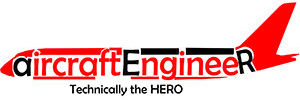Air navigation order Divided into sections and containing a number of Articles dealing with all aspects of UK civil aviation law.
Part 3 of the ANO is the most important to aircraft engineers, but you will also need to look at part 2 and a bit of part 5. There are some schedules at the end of the ANO which you need to look at as well.
Looking through the publication you will see Articles dealing with:
* Registration of aircraft.
* The need for, and the processes relating to, the issue and renewal of Certificates of Airworthiness.
* Maintenance and certification.
* Equipment standards.
* Tech logs.
* Operations manuals.
* The issue of licenses to maintenance engineers.
* Exit and break-in markings.
* Interpretations – what words and phrases mean.
In many instances the issue of a certificate, licence and approval depends upon the CAA being satisfied that its standards, or those of the JAA, which it accepts, are met.
The minimum standards required before the issue of certificates, licences, approvals etc, are laid down by the CAA in a publication called British Civil Airworthiness Requirements (BCARs), and JARs.
There are Articles concerned with drunkenness, smoking, and endangering the safety of the aircraft and/or its occupants (currently very topical).
Article 14 – Equipment – should be read with Schedule 4.
You will need to know about scales of equipment carried on aircraft such as:
* Spare fuses.
* Load hailers.
* Dinghies and life jackets.
* Escape slides.
* Oxygen supply equipment.
This list is not exhaustive but gives you some idea of some of the scales you should know about.
The first part of Schedule 4 lists description and uses of aircraft and states the appropriate scales, whilst the second part lists the actual scales.
The acceptance of JAR OPS for Air Operators Certificate holders who operate
“Commercial Air Transport” aircraft, has effectively separated these “CAT” aircraft from “Aerial Work” and “Private” aircraft, which still operate under the ANO and BCARs. See JARs, AOCs and CMRs. Equipment standards also differ.
